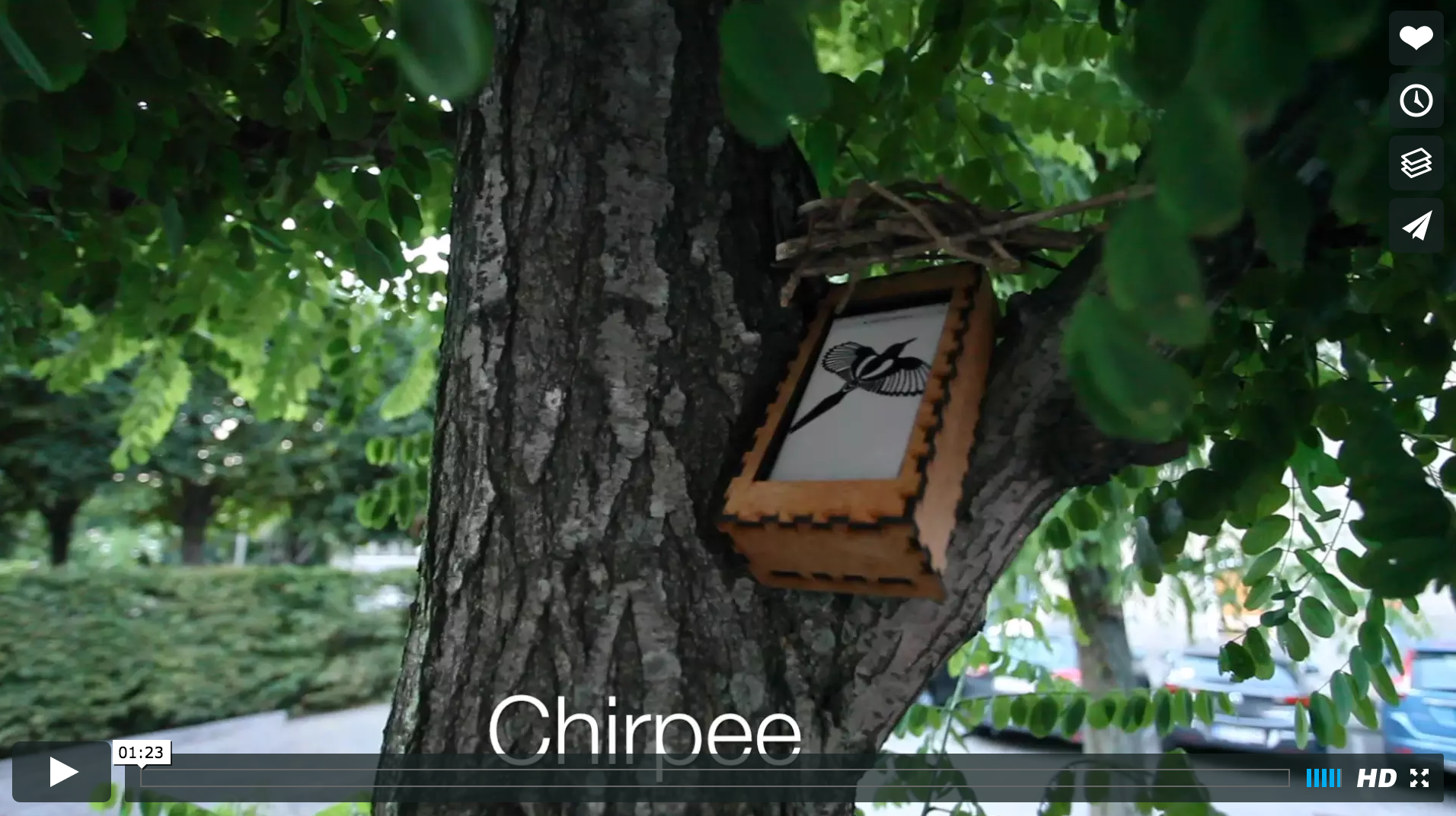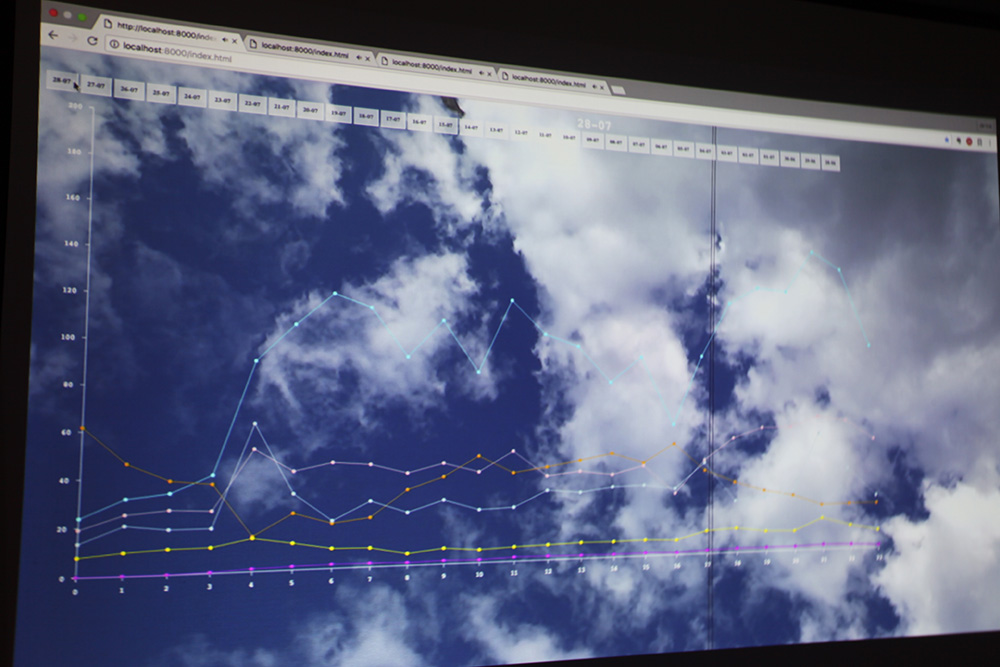By Noé Bhandari
Description:
Chirpee is a smart nest that warns bird populations of invisible environmental hazards to reduce their exposure. The project counters human-centred-design by proposing smart technologies for the animal kingdom. Why should humans be the only species to benefit from cheap and readily available computation?
Chirpee specifically addresses issues related to bird populations living in areas with high levels of urban pollution (both air quality and sound levels). Exposure to high levels of air born pollutants are known to increase hatchling mortality rates while high noise levels hinder bird communicatation and affect mating practices and the ability to signal danger from predetors such as hawks. Chirpee is able to detect Nitrogen Dioxide levels in the air as well as sound pollution. If pollutant levels are low Chirpee will emit a mating call to attract birds, if pollutant levels are high, it will emit the sound of a predator. Depending on location Chirpee will be updated with calls appropriate for communication with local species.
These devices could also potentially be deployed as a sensor network across an urban area to address other issues such as nighttime disturbance of migratory birds by city lights. The platform aims to improve the health of bird species in heavily polluted cities around the world.
Project by noé bhandari.
Tools: Smart Citizen Kit and p5js
by Sharon Hsienpu Chen and James Zhou


 Description:
Spiritum exists in a near future where reducing our carbon footprint is a necessity. Carbon conscientious individuals can choose to filter the carbon dioxide from their breath before releasing it into the air. Spiritum is a planet based filtration system that soaks up the carbon dioxide from exhalations before releasing it into the atmosphere.
Description:
Spiritum exists in a near future where reducing our carbon footprint is a necessity. Carbon conscientious individuals can choose to filter the carbon dioxide from their breath before releasing it into the air. Spiritum is a planet based filtration system that soaks up the carbon dioxide from exhalations before releasing it into the atmosphere.
@sharoniscarin @flodyssey
by Harper Hunt, Mindy Lee and Ian Robinson
Description: This study explores our intimate relationship between the honeybee and other pollinators. It is a series of works that create awareness by personifying the honeybee and humanizing our relationship to it primarily though the food industry and modern food culture. The project realizes human entanglement in relationship to the natural ecosystems through the creation of future artefacts and hyperbolic imagery.
The project makes aware the necessity of the honeybee and suggests the need for a more biodiverse landscape, the antithesis of the mowed lawn, sculpted garden, and industrial agriculture systems that infiltrates modern society. The audience is invited to consider what a more biodiverse ecosystem looks like from the perspective of the honeybee.
Contact info: Mindy.c.lee@gmail.com, Harper.e.hunt@gmail.com, info.ianrobinson@gmail.com Tools: P5, Chrome Developer, Illustrator, InDesign, Photoshop
by Mindy Lee
###London Air Quality Study by Julian Burgess
Description: A look at daily air quality variations in London for an entire year at a single monitoring station.
London has some of the worst air quality in europe. The network of monitoring stations make their data available and are visualized here. How does air quality change, and what factors affect it? The visualization displays how air quality changes over time of day and by day of year, revealing patterns and anomalies throughout the year.
In the future, I hope to show the information for all monitoring stations, for all years as well as information regarding measurement to reveal a better picture of local air quality and to see longer term trends and influences in air quality.
@aubergene
Tools: d3.js
by Patrick Svensson and Jenna Xu
Description: <<<<<<< HEAD What does air pollution look like when it’s not visible? Are we aware of what’s invisible? How do we unknowingly contribute to air pollution? We address the invisible generation of air pollutants and juxtapose our perceptions of air quality with the reality that we see and reported measurements. Our intervention will hopefully help the audience realize that air pollution is not always egregious in form (ie, smog), but exists even in environmentally-conscious cities like Copenhagen. We hope this sort of awareness might contribute to paying attention to issues relating to atmospheric pollution and global warming.
View project here. What does air pollution look like? Are we aware of what’s invisible? How do we unknowingly contribute to air pollution? We address the invisible generation of air pollutants and juxtapose our perceptions of air quality with the reality that we see and reported measurements. Our intervention will hopefully help the audience realize that air pollution is not always egregious in form (ie, smog), but exists even in environmentally-conscious cities like Copenhagen. We hope this sort of awareness might contribute to paying attention to issues relating to atmospheric pollution and global warming.
Technology used: d3.js and p5.js
d464c524cde7c49fb887e6c3a6a00d2c72f04294
by Katyayani Singh, Nathan Daviss, James Camilleri, Ajit Pillai and Ahmed Al-Nabhani
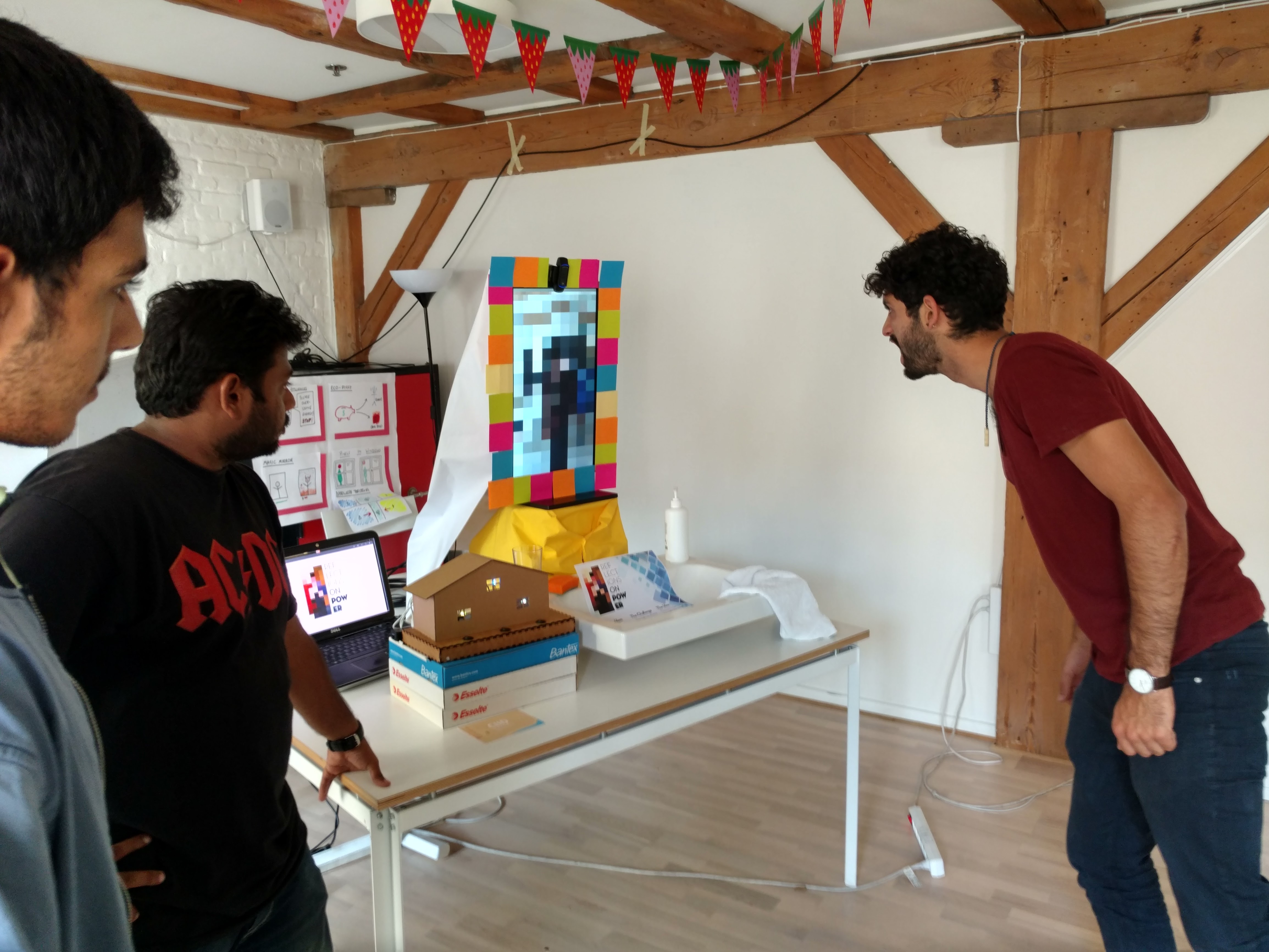
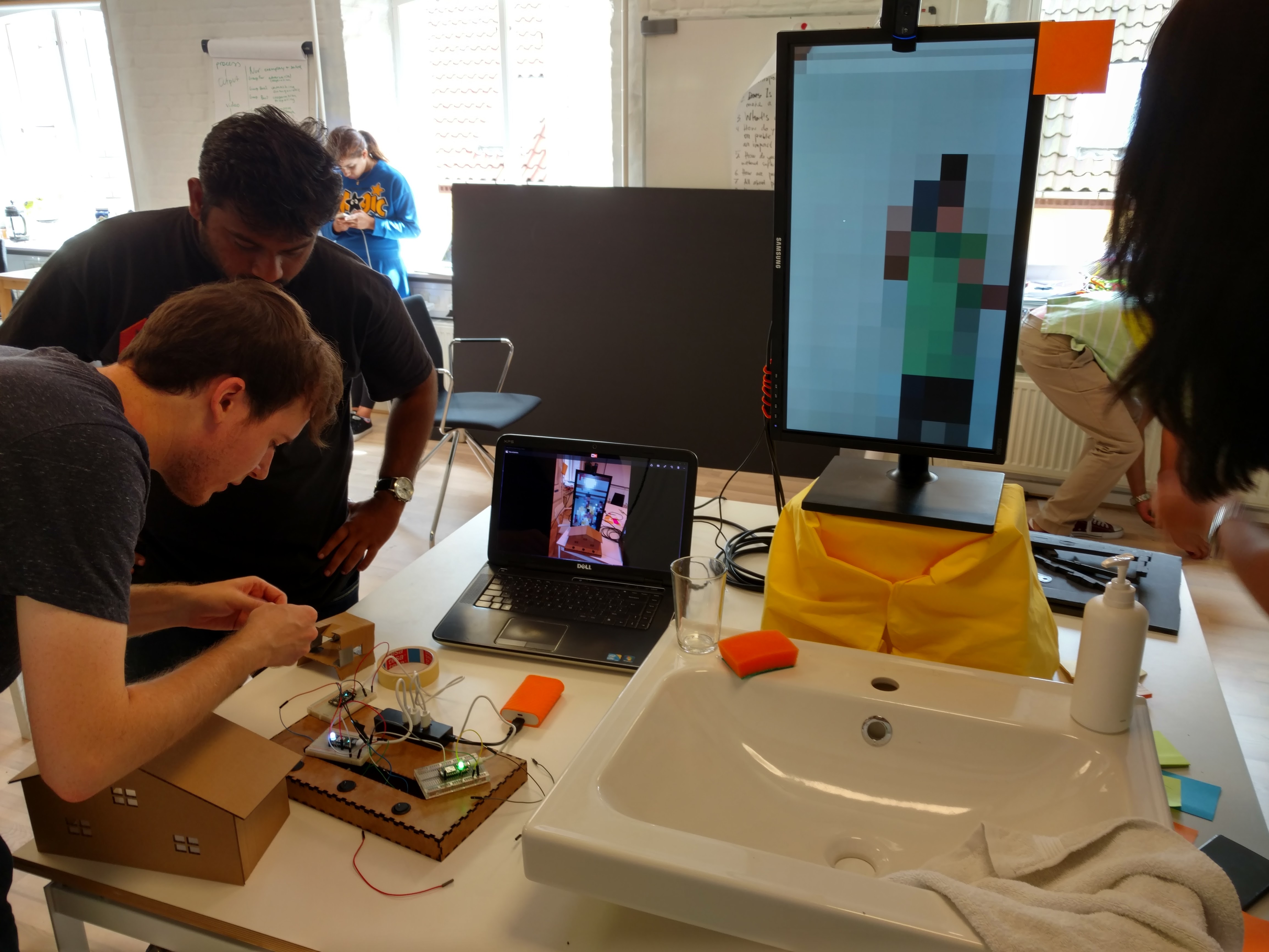
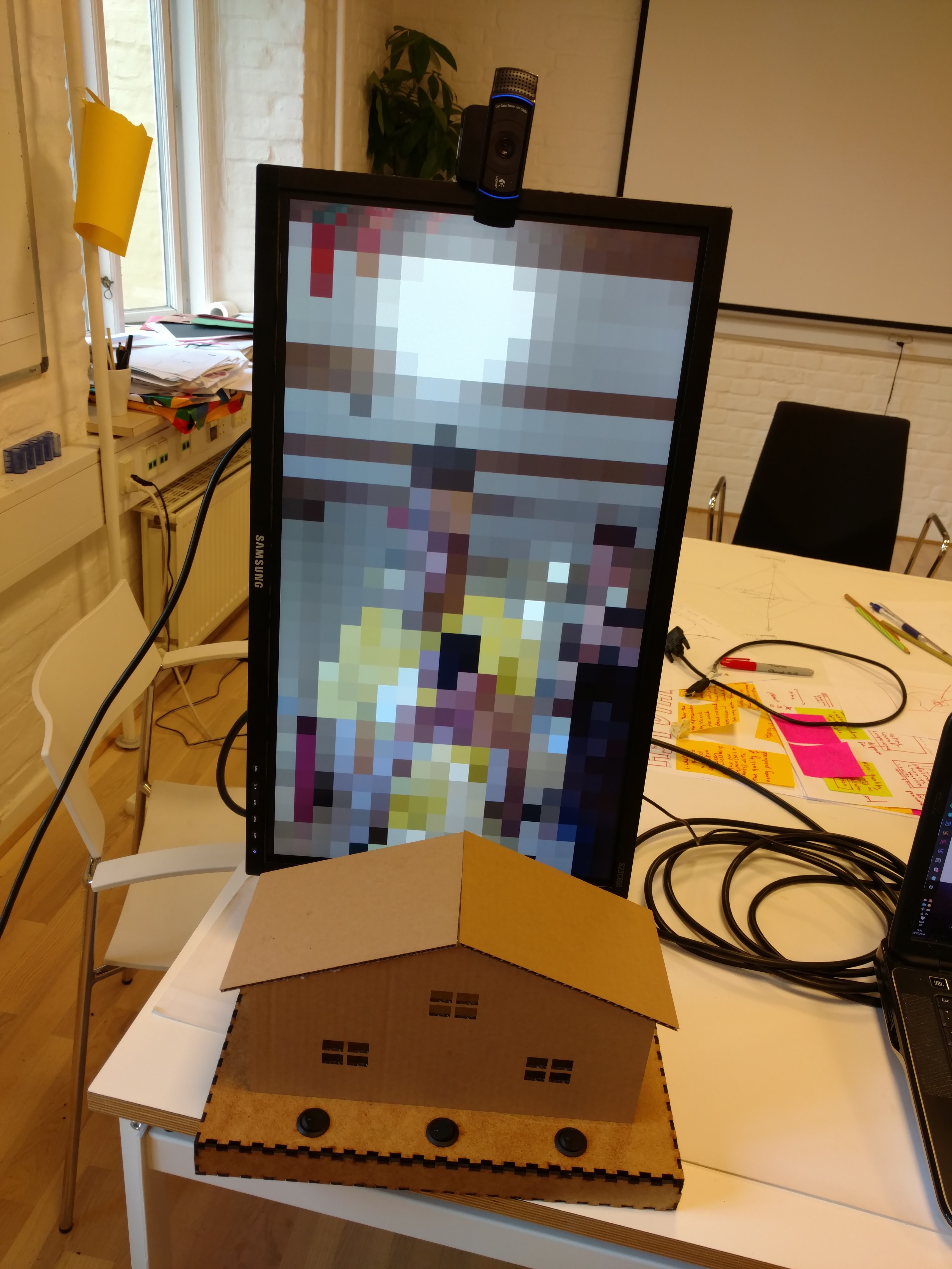 Description:
Designing an intervention which creates awareness about high energy consumption by playing into the narcissistic and self obsessive manner of people, making them take immediate action to cut down their energy usage.
Description:
Designing an intervention which creates awareness about high energy consumption by playing into the narcissistic and self obsessive manner of people, making them take immediate action to cut down their energy usage.
- Motivation How can we prompt users in their homes to be more careful about their energy consumption? How can we make the results of their habits more immediate and more tangible?
- Issues addressed People consume energy without realising its implications. From our research we came to know that everyone wants to be energy efficient and use the least amount of energy but as there is no immediate intervention, they do not realise that they are consuming higher amount of energy, hence they end up using more. So, we want to create an awareness about careful consumption of energy by creating short interactive interventions
- The intervention Our project is connected to the power grid and registers the power consumption of the dwelling. When it detects energy consumption to have increased, it automatically pixelates the mirrors, which makes the person realise that higher energy levels are being consumed.
- Addressing the issue This work addresses the narcissistic side of people, where they spend large amounts of time taking care of how they look, creating and clicking selfies. This interface explores self obsession as an opportunity for behavior change, they must lower their energy consumption if they want to see their proper self back again.
- The future We look at a future where people are aware of the intervention and consciously decide not to use higher energy. Also, we want to replicate the pixelation of yourself in the mirror to other glass based objects in the house, to create an even higher impact. We're also interested in linking energy use with WiFi, so the intervention happened both in real life and digitally. So as the energy consumption increases, the internet quality reduces. This highly impacts the awareness of energy consumption because people cannot handle the internet being slow.
Tools: p5js, Particle (Spark Photon)
by Andreas Schwab and Ola Al-Nabhani

Description: Honey is an indicator for soil quality as the quality of honey increases with biodiversity. The quality of soil is difficult to measure and visualize and, therefore, we use honey as visualization as a more tangible object. We created a concept for a platform that can be used by bee keepers to update the information on their honey and by the general public to obtain that information. The community and general public can taste the honey and give feedback to the bee keepers. This will foster interaction and raises awareness how the quality of soil and honey correlate.
